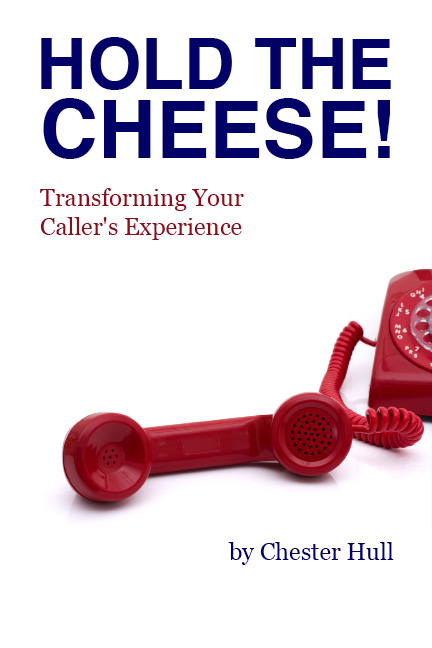 I love well designed phone system menus.
I love well designed phone system menus.
Unfortunately, the Caller Experience when calling the Federal Trade Commission is not one of those well designed systems.
My main complaint is this:
After listening to the entire Auto-Attendant menu (which is quite confusing in itself!), it gives the option “To repeat this menu, press *”. What happens when you press *?
“Thank you for calling…goodbye!”
Have you tested your phone system lately? Do you know what your customers experience everyday when calling your company?
Having options listed in your message that don’t match up with your phone system programming is extremely frustrating to your callers.
Farther down in the Auto-Attendant tree:
“You have selected to hear information about ______. If this is not what you wanted, please press 0 to hear the entire list of subjects available.”
Pressing 0 yields this encouraging message:
“Sorry, no one is available to help you right now. Goodbye!”
It’s tempting to pin this inefficiency on the fact that the FTC is a government office, and therefore not too concerned about the Caller Experience. After all, there is no competition, right?
But far too often, we are calling and testing business with these same types of issues. Companies that really do care about doing business with you…they’ve just overlooked some very important areas of customer interaction.
So take a moment now and try your Auto-Attendant options. Do they send your call where it says it’s sending you?


 There are times when your Auto-Attendant or Integrated Voice Response (IVR) system simply isn’t going to provide what your caller wants.
There are times when your Auto-Attendant or Integrated Voice Response (IVR) system simply isn’t going to provide what your caller wants. This post is guaranteed to be legalese-free!
This post is guaranteed to be legalese-free! Using technical jargon is one of the easiest ways for a business to get tripped up in any of their marking or customer communications. Technical jargon…insider lingo…industry acronyms…it all comes from what I call “The Curse of Knowledge”.
Using technical jargon is one of the easiest ways for a business to get tripped up in any of their marking or customer communications. Technical jargon…insider lingo…industry acronyms…it all comes from what I call “The Curse of Knowledge”. In order to read this blog post, please choose from the following options:
In order to read this blog post, please choose from the following options: One of the first things to look at in an Auto-Attendant design is eliminating branches. The more branches there have to be, the more likely you will be frustrating your caller.
One of the first things to look at in an Auto-Attendant design is eliminating branches. The more branches there have to be, the more likely you will be frustrating your caller. When it comes to writing for Aut0-Attendants, there’s a lot that can be learned from rules of writing in general. Rules of good writing shouldn’t be simply thrown out the door just because the application is to fit inside the constrains of a phone system.
When it comes to writing for Aut0-Attendants, there’s a lot that can be learned from rules of writing in general. Rules of good writing shouldn’t be simply thrown out the door just because the application is to fit inside the constrains of a phone system. Guiding or ordering? Which one are you doing in your Auto-Attendant? People want to be drawn in, not ordered around. After all, the reason you have an Auto-Attendant is to give your callers options…which by very definition means they are free to choose what they would like.
Guiding or ordering? Which one are you doing in your Auto-Attendant? People want to be drawn in, not ordered around. After all, the reason you have an Auto-Attendant is to give your callers options…which by very definition means they are free to choose what they would like. What’s more confusing…a poorly designed Auto-Attendant that leaves you to flounder around all by yourself, or one that is so poorly designed that the creator chooses to put roadsigns and instructions for how to navigate?
What’s more confusing…a poorly designed Auto-Attendant that leaves you to flounder around all by yourself, or one that is so poorly designed that the creator chooses to put roadsigns and instructions for how to navigate? Facebook
Facebook LinkedIn
LinkedIn Twitter
Twitter



